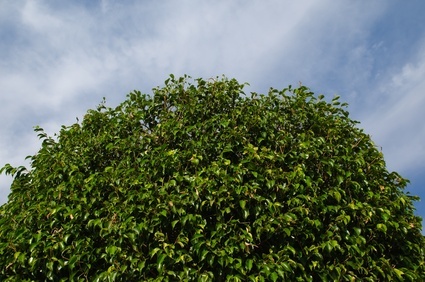Tree Trimming & Other Tree Care Tips For Seattle
 Trees are a natural, beautiful addition to any landscape. They enhance the curb appeal of the home and add natural shelter from the sunlight. While some trees on your property may have grown in unplanned, there are likely trees which are important for the aesthetics of your landscape. Tree trimming and other tree care tasks are important in order to maintain all the timber on your property.
Trees are a natural, beautiful addition to any landscape. They enhance the curb appeal of the home and add natural shelter from the sunlight. While some trees on your property may have grown in unplanned, there are likely trees which are important for the aesthetics of your landscape. Tree trimming and other tree care tasks are important in order to maintain all the timber on your property.
Tree trimming will actually help the trees to be healthier if it’s done properly. It’s important to trim off branches that compete with each other or the tree will waste energy feeding the invasive branch.
As trees grow, there will be limbs growing downward or toward a structure like your roof or fence. When a tree is young, it’s important to train the tree by trimming the branches that grow in the wrong direction. And, the tree is more vulnerable to branch splitting during high winds if the branches are growing at a tight angle to the trunk. An entire tree can split down the middle during high winds if the branches are not properly trimmed.
Understanding all this, you are probably looking for information on how to take care of your trees. It isn’t easy to know when you need a good tree trimming or how to ensure that the desirable trees on your property stay healthy. And it’s not always apparent when it’s the best time to go ahead with tree removal. Here are some tree trimming and tree care tips for Seattle homeowners that should help.
When Tree Trimming Is Best
Every species of tree is either deciduous or evergreen. Deciduous trees drop their leaves during autumn or fall season. Evergreens stay green all winter. Both types of trees go through different stages throughout the year. Deciduous trees stay more dormant during the cold season and don’t grow much while evergreens grow very slowly. Both types of trees should be watered less often during the winter, but don’t neglect it altogether.
Tree trimming is best done during the dormant stages because the sap is thickest then. When you make a cut, the timber needs to be able to repair itself with clotting sap. When the sap is thin, it often takes a long time to clot the wound and then disease and insect infestation can more easily occur.
Tree trimming, as mentioned, should start at the sapling stage but not during the first year. It is best to start trimming your young trees after three years of growth. This way, you can also see which branches are forming into the main tree structure so you can trim off any competing ones. But let’s face it, most people don’t start this early with tree trimming. Just be sure that you aren’t trimming off too much at a time on an established tree or you will shock it and could wind up having to remove it altogether.
When To Consider Tree Removal
There is no getting around the fact that sometimes a tree has to come down. One of the most common problems that lead to tree removal is when the timber grows toward a power line or a structure on the property. There are also times when it’s important to thin out some trees due to overgrowth. It isn’t easy to grow a nice lawn when there’s no sunlight filtering through.
Seattle is very protective of its valued trees, so you need to be sure to understand the tree protection regulations put forth by the City of Seattle Department of Planning and Development before you remove a tree on your property. There are certain tree species that are considered a protected resource.
Tree removal is a dangerous process that is best done by a tree service like ours at Ace Tree Service. We have all the tools and equipment to deal with the thousands of pounds of weight. A full-size hardwood can be as heavy as 50 tons or more. You don’t want to risk having a branch crash down on your roof or on you. We use safety equipment and heavy machinery for a reason! If you ever need tree removal or tree trimming service in Seattle, give us a call and we’ll be glad to help.














